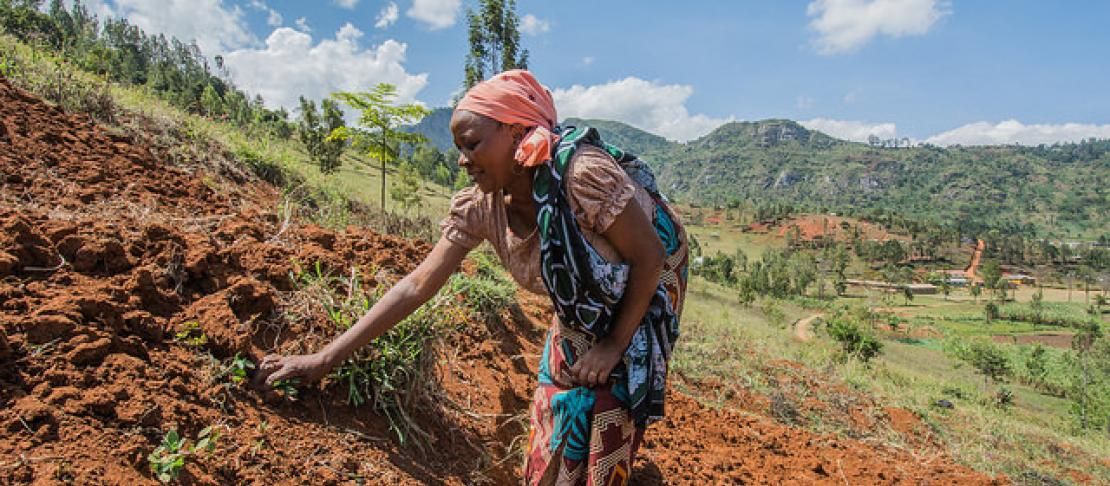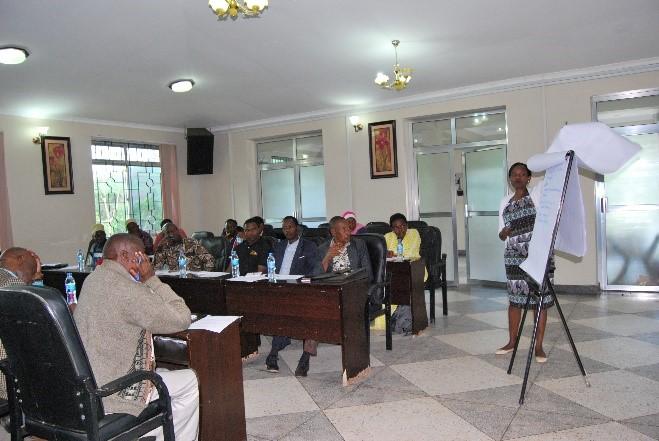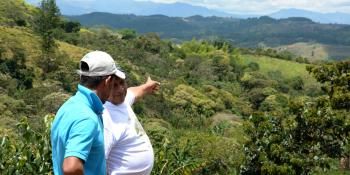Lushoto District Climate Change Learning Alliance reveals priorities for land restoration

Participatory land use planning is seen as key to ensuring sustainable land use in Lushoto, Tanzania.
Arriving in Lushoto through its steep winding road has always brought an interesting feeling. As you climb from the valley in Mombo, one observes that farmers are growing a number of crops in the valleys and between the hills, a sign of diversification on their farms. Signs of off-farm activities such as local trade are also visible.
It all seems okay but when you speak to the residents, they tell you that changes, largely negative, are already happening. Some of the most frequently mentioned changes include decline in crop production, increased soil erosion, declines in forest cover, rising temperatures, drying of rivers, decreasing water in the valleys and irregular rainfall patterns.
The Lushoto District Climate Change Learning Alliance, International Centre for Tropical Agriculture (CIAT) and International Institute for Tropical Agriculture (IITA) convened a meeting in December 2017 with an aim of jointly identifying with the stakeholders specific actions for land restoration and collective multi stakeholder efforts. It brought together farmers and local leaders from the four villages of Boheloi, Mbwei, Sunga and Madala, representatives from the Environment Management Unit, Ministry of Agriculture, university staff, civil society organizations, faith-based organizations, and District authorities.
During the opening session, the Lushoto District Council Chairman, Hon. Lucas Shemndolwa stated,
We need a holistic approach to land restoration. For example, the youth migration is a big problem. The elderly population remaining behind does not have the energy to undertake high labor demanding land management practices such as terracing. We also need to continue creating awareness on water, land and ecosystem management among the younger generation. It is possible that past generations contributed to land degradation out of ignorance on the impact of their practices. We also need to provide households with the interventions required to enable them to support policies targeted at promoting sustainable land and water management. For example, by providing alternative energy sources. Research needs to provide information on the context specific practices – what is needed where.”

Dr. Caroline Mwongera collects feedback from participants on how to restore degraded land in Lushoto, Tanzania. Photo: P. Muchunguzi (IITA)
Facilitated by Caroline Mwongera, stakeholders generated a long list of soil and water management practices and actions appropriate to the local context. This resulted in about 30 technologies. Three groups were formed to carry out further prioritization: a women’s group, a men’s group, and a group of local experts.
Prioritized land resoration strategies by men's, women's and expert's groups in Lushoto, Tanzania
Women's group | Men's group | Experts' group |
Afforestation using environmentally friendly trees | Afforestation using indigenous tree species | Physical practices (bench terraces, fanya juu, fanya chini, vunamaji kuu, stone terraces, rain water harvesting) |
Environmental education in the communities | Environmental education in the communities | Biological practices (trash line, grass strips, agroforestry, mulching, fallow farming, tree planting, zero grazing, cover crops, alternative energy like bio-gas) |
Water use efficiency (water harvesting and irrigation) | Rainwater harvesting | Appropriate land use plans |
Climate smart practices (cover crops, crop residue management, crop rotation, agro-forestry and mulching) | Land use planning | |
Introduce alternative and sustainable livelihood sources | Enforce bylaws |
There are some similarities in what was prioritized especially between the men’s and women’s groups. Interesting to note is that whereas the expert group focused more on the practices themselves, the other two groups (men and women) took a more comprehensive approach and included both practices and the enabling environment required to achieve land restoration. Some of the technologies bundle together many practices which can pose a challenge to scaling. This suggests that there could be a need to develop a stepwise approach to enable farmers to choose what is most useful and feasible for them to adopt.
We have been identifying priority areas and developing implementation plans, but the challenge is that the majority of our partners come with set objectives and priorities. We believe this is one of the issues why we see slow progress,” says Mr. Eliezer Moses, Lushoto District Agricultural Officer and the Climate Change Learning Alliance facilitator.
For sustainable soil and land management to occur, a system-wide holistic approach looking beyond technologies to address also the incentives for adoption and implementation challenges is important.
As part of the solution, the District Chairperson highlighted that population management is critical to reduce pressure on the environment. Participants also advocated for participatory land use planning to ensure land is used sustainably to support various livelihood activities and ecosystem services.
This work was implemented as part of the CGIAR Research Program on Water, Land and Ecosystems (WLE) and Climate Change, Agriculture and Food Security (CCAFS). Actions identified for land restoration will be shared to inform future investments including the WLE Program and other development partners.
Interested in policies and priorities for climate-smart food systems? Subscribe to our newsletter to receive quarterly updates on our CCAFS work and occasional announcements.
Read more:
- Blog: Reflecting on the role of climate change district learning alliances: Are they beneficial?
- Blog: Lessons for successful scaling of climate-smart agriculture innovations
- Related journal article: Adoption and Dissemination Pathways for Climate-Smart Agriculture Technologies and Practices for Climate-Resilient Livelihoods in Lushoto, Northeast Tanzania
Perez Muchunguzi is a Multi-stakeholder Specialist with IITA based in Kampala, Uganda. Caroline Mwongera is a Farming Systems & Climate Change Scientist with CIAT based in Nairobi, Kenya.



